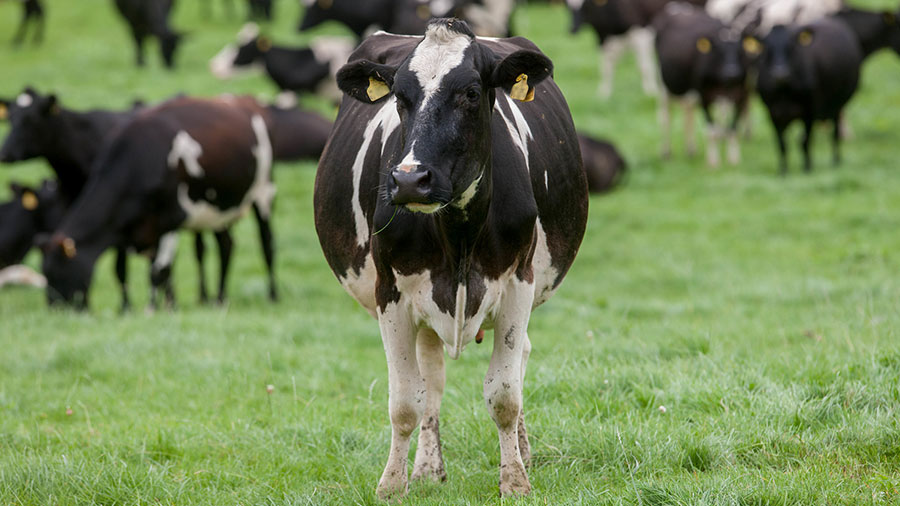Autumn-calving herds advised to graze now to cut diet costs
 © Tim Scrivener
© Tim Scrivener Autumn block-calving herds should target pre-grazing covers no greater than 3,000kgDM/ha, or they will compromise intakes and utilisation.
Cows in early lactation won’t be able to graze swards that are 3,500kg or more, says grazing consultant Andre van Barneveld of Graise Consultancy.
Pasture quality starts to drop as grass develops long stems, with tall swards yellowing in the base: “Cows won’t be able to graze this down to a nice residual,” he points out.
See also: How to set your grazing up for next spring
“Managers should be aggressive and take out the surplus – mow it for silage (either baled or open up the pit) otherwise it will impact production.
“The focus should be on getting the right pre-grazing covers, or you will get into an endless cycle of grazing too-long covers. And the worst-case scenario is too-high covers in early October.”
He understands the temptation for autumn herds to house cows for consistency, to protect yield and fertility. But, he says that economically, if there is still a lot of grass around it’s by far the cheaper diet.
“Soil moisture and temperatures are high, so the grass keeps on growing. Trans-evaporation rates are lower than they would be with similar conditions in July, meaning the ground and grass plant will not dry out,” he says.
“As long as the weather is good, intakes will be good. Once we get to cooler, wetter conditions, then it’s ideal to house cows at night and graze by day.
“It’s all a big question of cow type and calving date: autumn herds calving on 1 August will be at a different stage of the cycle to herds starting in mid-September.”
